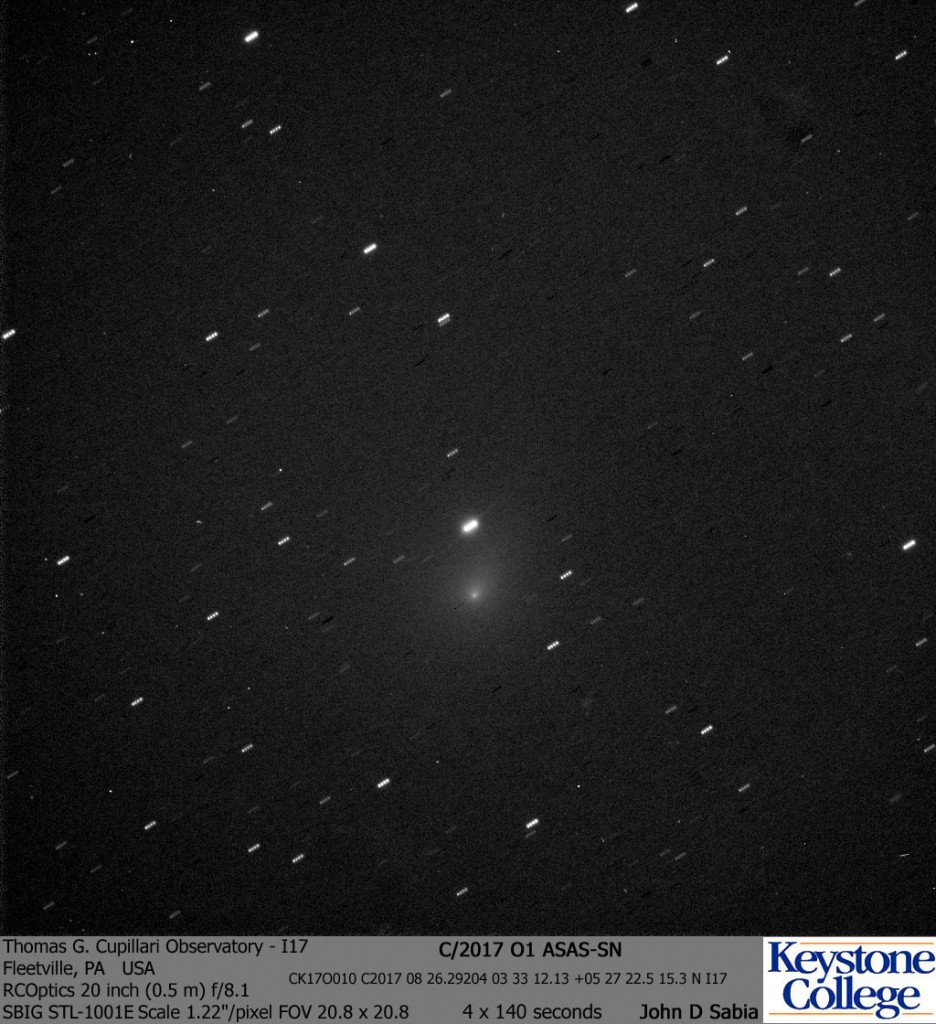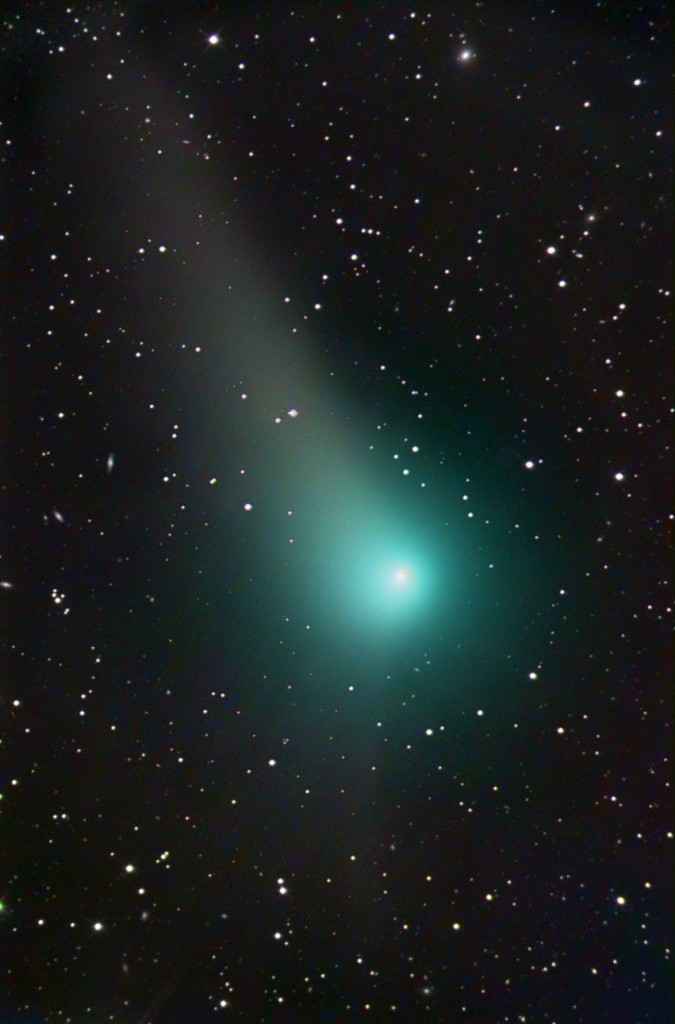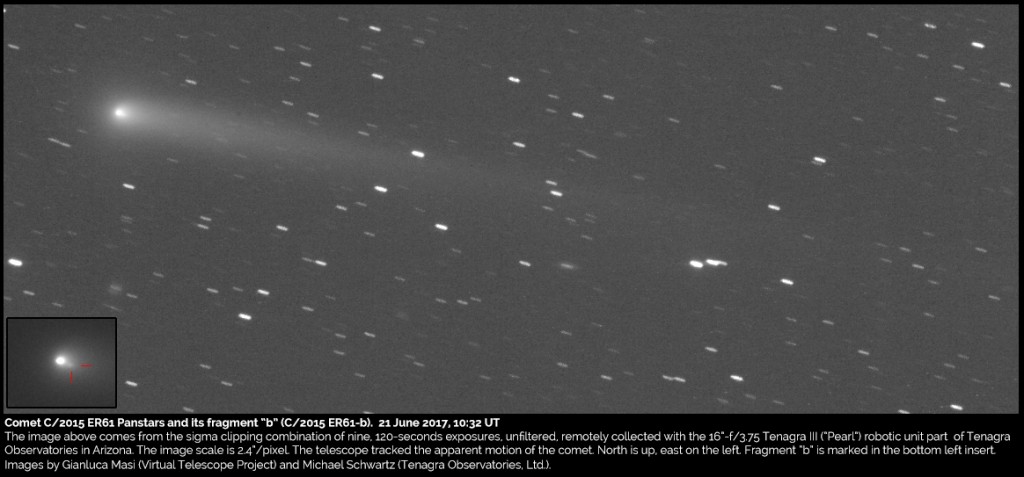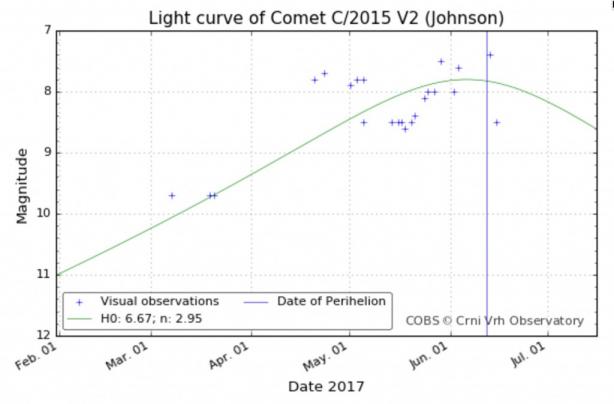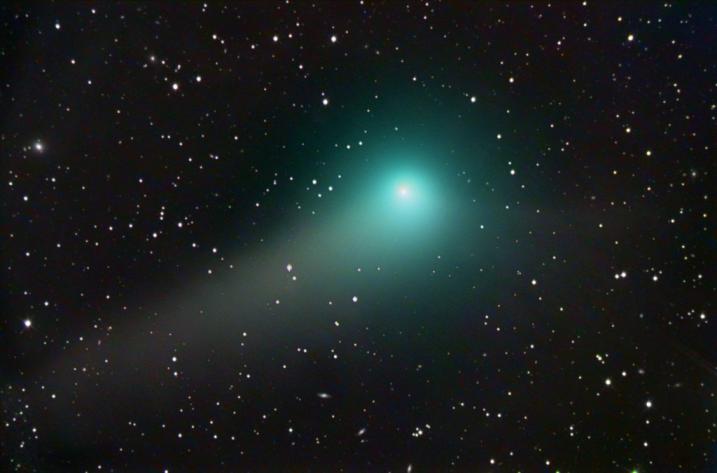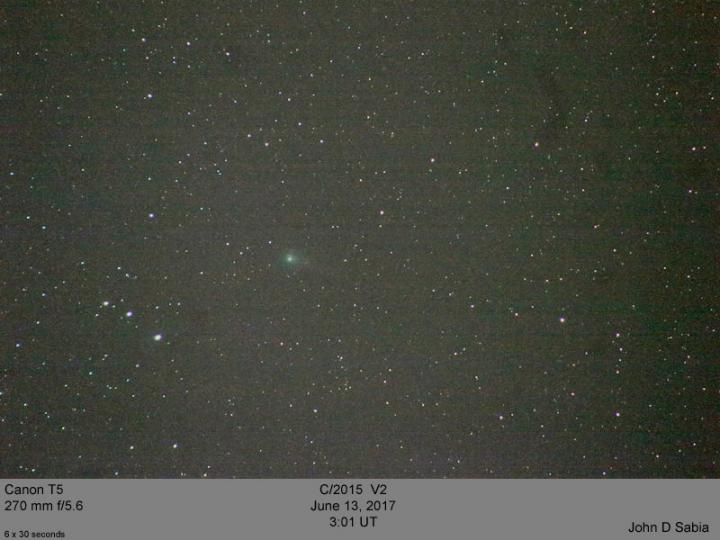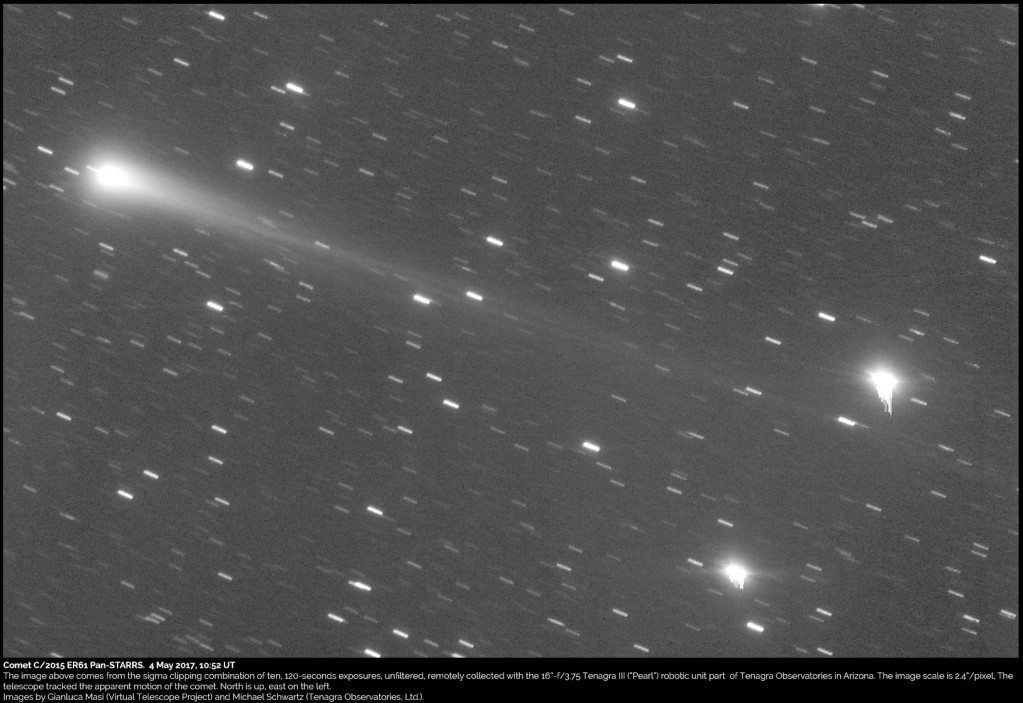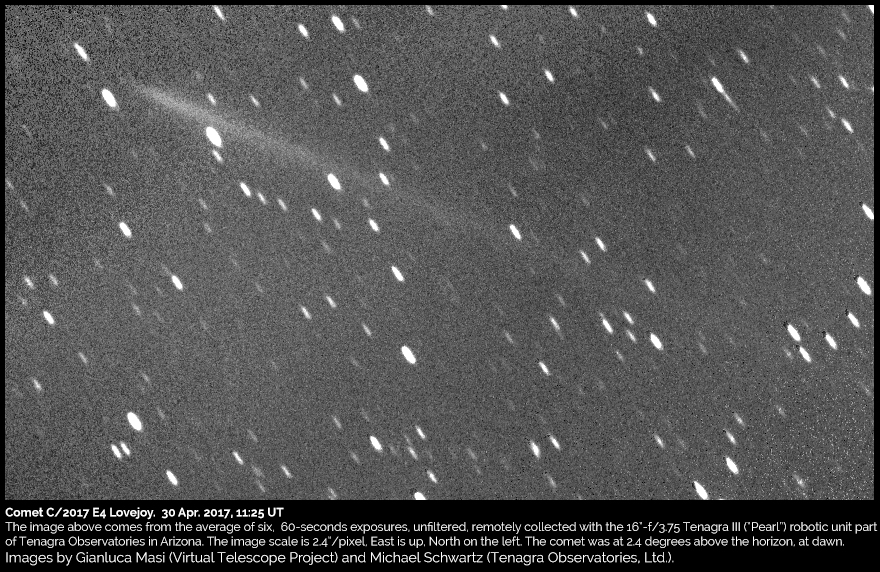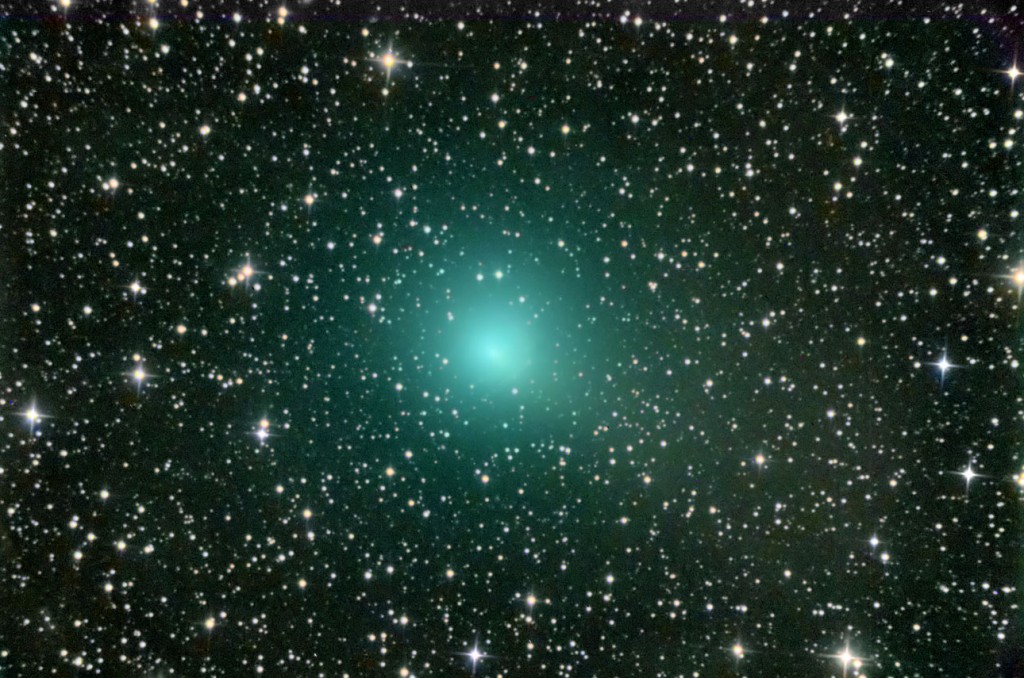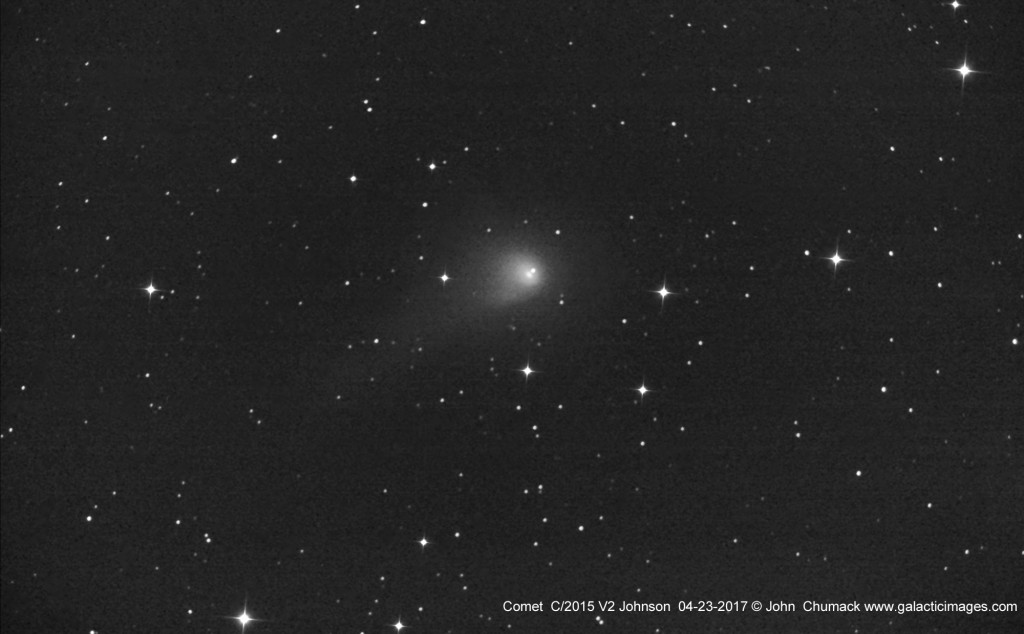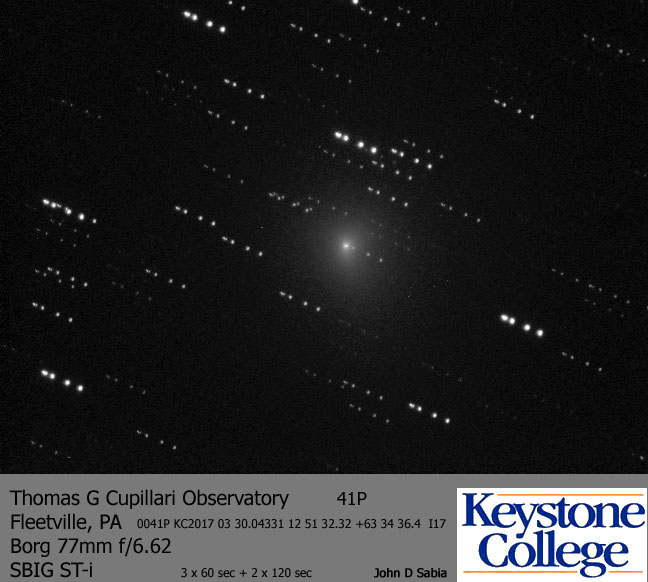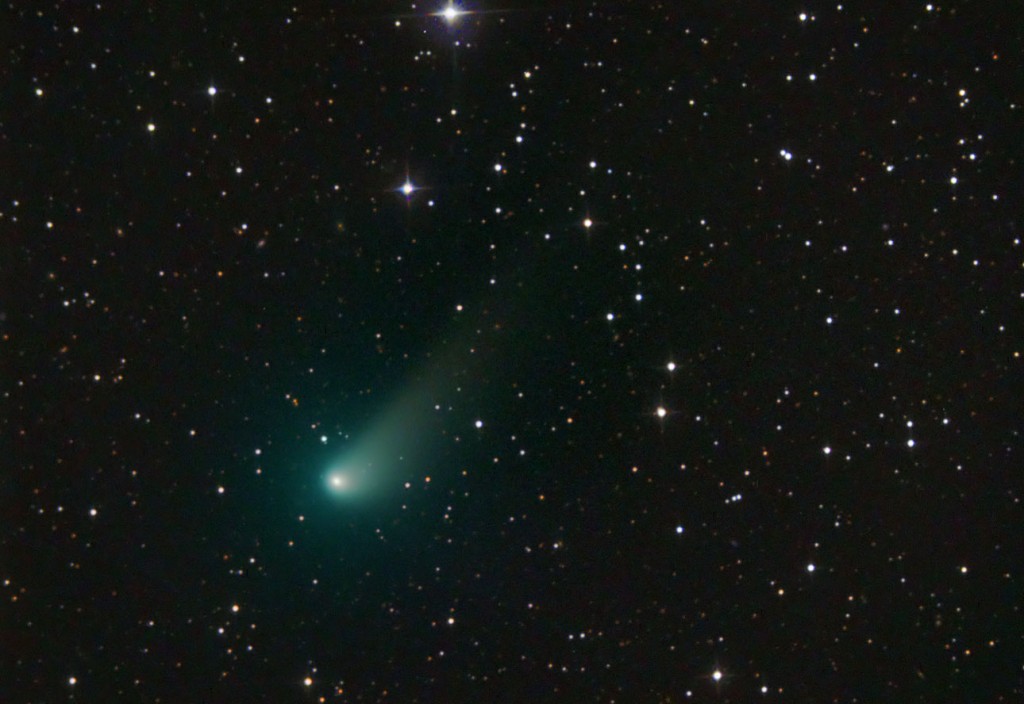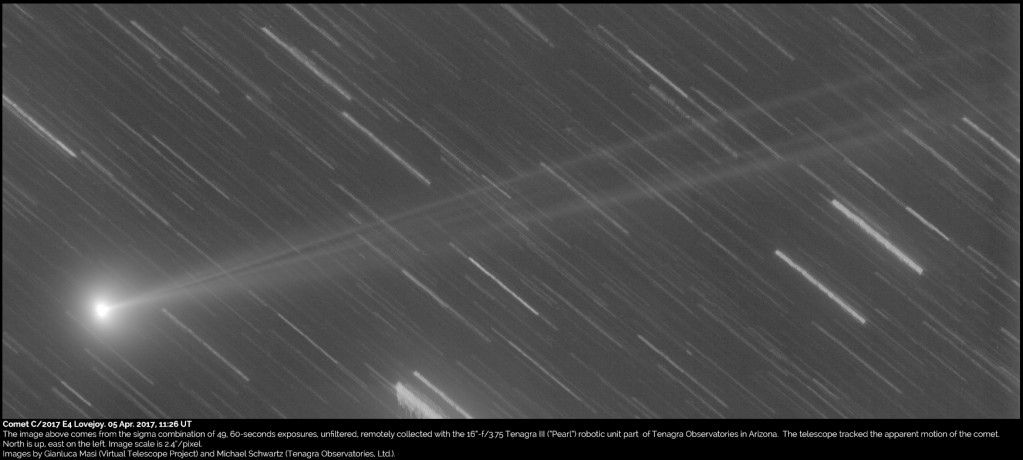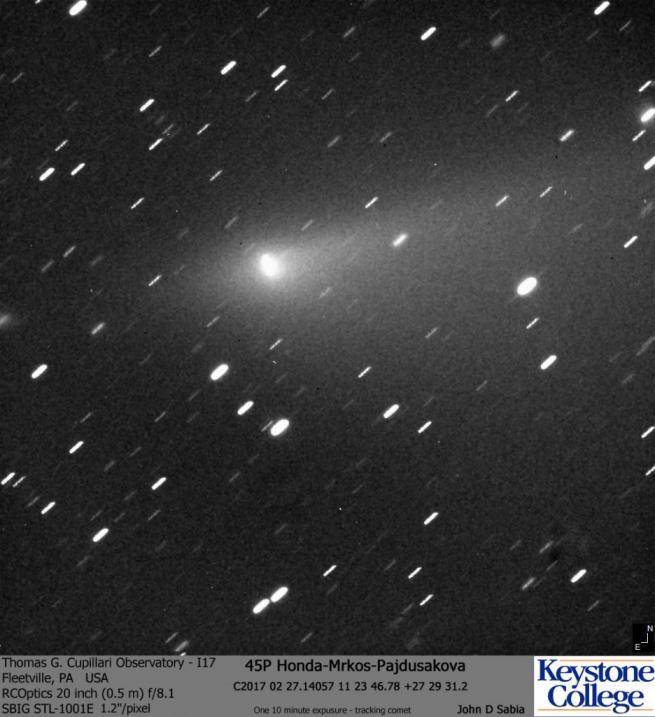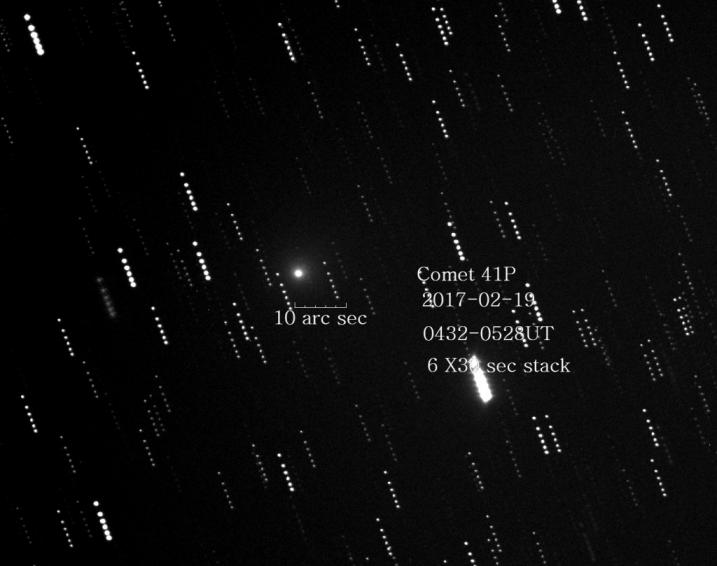ALPO COMET NEWS – OCTOBER 2017
2017-October-1 [updated October-7]
[Coordinator's note: Past Comet Section Coordinator Don Machholz reminded me of an omission in the October ALPO Comet News: one of his discoveries, 96P/Machholz. Though a difficult comet to observe for most observers, it will be visible in SOHO images and should be the brightest comet this month. The text below has been updated to include information on 96P.]
Two comets will be brighter than 10th magnitude this month, 96P/Machholz and Comet C/2017 O1 (ASASSN). Only C/2017 O1 will be brighter than 10th magnitude and easily observable visually. It was hoped that ASASSN would brighten to 7th magnitude but, alas, it looks like magnitude ~9 is as bright as it will get. Short-period comet 24P/Schaumasse should brighten to almost 10th magnitude by the end of the month as it makes its 11th observed return since its discovery in 1911.
Evening Comets
C/2015 V2 (Johnson) [Perihelion on 2017 June 12 at 1.64 au]
Comet Johnson remains solely a southern hemisphere object as it moves through Norma (Oct 1-5) and Ara (5-31). Johnson is well past perihelion and is in full retreat from the Sun (2.19 to 2.46 au) and Earth (2.34 to 2.84 au). As a result, the comet is expected to fade from around magnitude 11 to 12 this month.
29P/Schwassmann-Wachmann 1 [Perihelion on 2019 March 7 at 5.77 au]
29P has been very active the past few months. During September it was reported to be as bright as 11th-12th magnitude and seemed to be in a constant state of outburst. This is one comet where rapid changes in brightness and coma morphology make day-to-day (and sometimes even hour-to-hour) monitoring worthwhile. CCD imagers are especially asked to keep a watch on this enigmatic object as it slowly drifts near the Capricornus/Aquarius border in the evening sky.
C/2017 O1 (ASASSN) [Perihelion on 2017 Oct 13 at 1.50 au]
C/2017 O1 (ASASSN) burst onto the scene in July after its discovery by the All-Sky Automated Survey for Supernovae. The comet experienced an outburst in the days following discovery (and possibly even prior to discovery) and rapidly brightened to 9th magnitude. There was hope that the comet would continue to brighten as it approached perihelion and closed in on the Earth. Alas, the comet has actually faded intrinsically over the past month. Its brightness has been steady around magnitude 9.0 to 9.5 as its smaller heliocentric and geocentric distance has counteracted the intrinsic fading. Both myself and Salvador Aguirre have been observing ASASSN visually. In my 30×125 binoculars, the comet possessed a very diffuse 5-6′ coma with little condensation. Salvador also noted the comet to be very diffuse and little condensed in his 0.2-m SCT at 50x. The large diffuse nature of the coma has resulted in differing brightness estimates between myself and Salvador (magnitude 9.0-9.2 in the 30×125s and 10.0-10.4 in the 0.2-m at 50x). This is an object where observing with the smallest aperture instrument (that is also large enough to see the comet) is preferred.
As ASASSN moves northward through Perseus (Oct 1-16) and Camelopardalis (17-31) it is also rising earlier in the night. The comet is high enough to observe by 10-11 pm at the start of the month and is circumpolar by the end of the month. Its heliocentric distance is around 1.50 au all month with perihelion on October 13. It geocentric distance is also fairly steady this month (between 0.72 and 0.77 au). How bright it will get is questionable but short of a new outburst it looks like 9th magnitude is the maximum for this comet.
John D. Sabia imaged C/2017 O1 (ASASSN) on September 26 with a 0.5-m RC from northeast Pennsylvania. While the comet possesses a small condensed dusty component to its coma, the image shows evidence of the much larger diffuse coma seen by visual observers.
Morning Comets
96P/Machholz [Perihelion on 2017 Oct 27 at 0.12 au]
This month’s brightest comet should be short-period comet 96P/Machholz. One of former ALPO Comet Section Coordinator Don Machholz’s visual discoveries, 96P was first seen 1986 and 2017 marks its 7th observed apparition. 96P is also one of the more interesting comets. For starters, it is a short period comet (5.3 year orbital period) with a super low perihelion distance of 0.12 au. It is also a member of the Machholz complex. This complex is made up of related objects that most likely originated from a single progenitor some time in the past. In addition to 96P, the Machholz complex also consists of an asteroid (now 2003 EH1, but may have been an active comet in the past and observed as C/1490 Y1), lots of meteor showers (Quadrantids, daytime Arietids, Northern δ-Aquariids, Southern δ-Aquariids, November ι-Draconids, December α-Draconids, daytime λ-Taurids, θ-Carinids, κ-Velids) and other comets (all of the Marsden and Kracht comet groups). Recent studies of the above mentioned meteor showers suggest the Machholz complex has been active in the inner Solar System since 10,000 to 20,000 BC.
Comet 96P/Machholz will be difficult to observe visually from the ground this year. Northern observers will have no chance to see the comet while observers south of the equator will be able to catch a glimpse of the comet very low in the morning sky during the first half of October. Luckily, 96P will pass through the field-of-view of the SOHO spacecraft’s LASCO C3 coronagraph imager between October 25 and 30. The comet should get as bright as 2nd magnitude at perihelion on the 27th. After perihelion the comet will be too far from the Sun to be seen by SOHO but too close to the Sun to be seen by any Earth-based observers until 2018. Watchers of 96P in the SOHO images should be on the look-out for secondaries of Machholz. The same process that broke up the Machholz complex’s progenitor are still active. During 96P’s last return, two small secondaries were observed in the SOHO images leading the main comet by a few hours.
24P/Schaumasse [Perihelion on 2017 Nov 16 at 1.21 au]
Short-period comet 24P/Schaumasse is making its 11th observed return since its discovery back in 1911 by French astronomer Alexandre Schaumasse. The comet currently has a 8.25-year period and is being observed for the first time since 2001 having been missed at its last (and poorly placed) apparition in 2009. Perihelion occurs next month on November 16 at 1.21 au and closest approach to Earth only a week later at 1.46 au. The comet is a morning object moving through Cancer (Oct 1-5) and Leo (5-31). Currently 13th magnitude, Schaumasse should brighten to 10.5 by the end of the month.
New Discovery
The Pan-STARRS survey has discovered another comet that may become bright enough for most observers in the summer of 2018. C/2017 S3 (PANSTARRS) is currently 20th magnitude and located at 5.2 au from the Sun. That distance is comparable to the distance of Jupiter though the comet is well north of the Jupiter’s actual orbit at a declination of +78°. Perihelion will occur on August 15 of next year at only 0.21 au from the Sun. It is too early to say much about the brightness prospects of C/2017 S3. Right now, its orbit suggests a dynamically new object meaning it is likely to brighten slowly and may even be too small to survive long past perihelion. Regardless, this is one to watch (mainly with CCDs) over the coming months as it will be observable from the northern hemisphere through early August of 2018. Visual observers may have a small window to observe it in the weeks prior to perihelion. Unfortunately, southern hemisphere observers will miss out on this comet.
As always, the Comet Section is happy to receive all comet observations, whether images, drawings or magnitude estimates. Please send your observations via email to < carl.hergenrother @ alpo-astronomy.org >.
- Carl Hergenrother (ALPO Comet Section Coordinator)



